Frieze Masters 2013
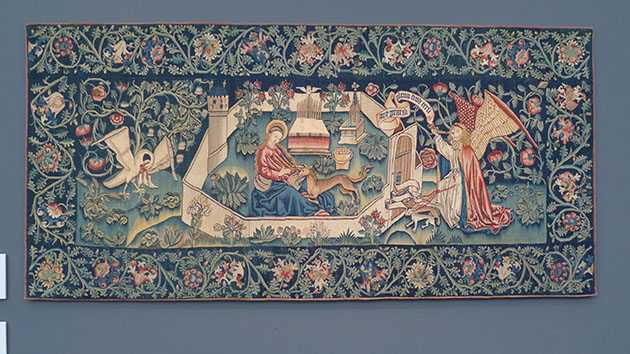
Middle Rhine tapestry, circa 1500. The field shows the Virgin Mary within an enclosed garden with a tame unicorn, used in this period as a metaphor for Christ. The Archangel Gabriel calls with a horn to the right three dogs symbolising hope, faith and charity. To the left a pelican spills its own blood over its chicks, symbolising the sacrifice of Christ on the cross. The plants that grow throughout the tapestry are associated with the Virgin Mary: roses, lilies and columbines. Sold by Gallery Moshe Tabibnia, Milan during the first days of the fair.
The second edition of Frieze Masters, in London’s Regent’s Park from 17–20 October 2013, has grown considerably from last year, establishing its own identity rather than seeming to be a spin-off from Frieze London. ‘Masters’ presents 130 of the world’s leading galleries, up 25 percent from last year, whereas Frieze London has 30 fewer exhibitors in order to make way for wider aisles. With 106 participants in the main section and 24 in ‘Spotlight’ ( home to smaller, more conceptual modern art galleries), the art ranges from the ancient era and old masters through to art of the 20th century. In fact for some the Spotlight section, a neat transition between Frieze and Frieze Masters, has been reported to be one of the highlights October’s London art fairs (PAD London is in London’s Berkeley Square at the same time).
The fair might not be to everyone’s taste (there have been a few sharp reviews in the press) but the presence of members of the TEFAF executive committee during the preview days, as well as many TEFAF Maastricht exhibitors, suggests that this event is being taken very seriously by the establishment, and rightly so. The quality of the exhibits cannot be doubted in HALI’s area of expertise, and their presentation amplifies the art rather than reducing it to stand decoration. The fair has a less stuffy atmosphere than many fairs with traditional art and antiques, although it must be said that the lack of furniture tends to help, as there is a distinct lack of gilt and ormolu. Sales were seemingly swift, and many stands had curated solo shows of artists’ work: there are more Alexander Calder’s than one can imagine – one was being packed for shipping on a stand as we walked around.
The recipe for the fair’s success is twofold: it reignited the enthusiasm for art with cool architectural design allowing the diversity of the material on offer to open up new areas to all visitors, yet it retained the elite nature of the top end of the market, but with a light touch. It felt as if one was walking around a large gallery. The £25 entry ticket kept the riff-raff out but neverthess encouraged those who are interested but perhaps can’t afford the art to have a look around. As well they might as this is where taste for art is now being set, and the better the art world will be for its influence too.

Frieze Masters, London
13 images
Highlights from London's premier art fair. Frieze Masters may be only in its second year but it seems to have piqued the interest of Londoners and the art world
- The stand of Moshe Tabibnia Gallery, Milan with a Middle Rhine tapestry from circa 1500 hanging above the Benguiat Cairene Ottoman carpet. At the time of writing the gallery had sold two early tapestries, two rugs and had several pieces on reserve.
- The silk pile and metal thread has always made these carpets amongst the most important and obvious symbols of power, patronage and oriental splendour. This is a particularly stately example with its rare square size and potent cross at its centre. Polonaise carpet, Esfahan, Central Persia, 17th century. Gallery Moshe Tabibnia, Milan
- This design of one hundred antiques symbolised the transition and continuation of Chinese culture from the Ming dynasty to the Qing. ‘Hundred Antiques’ carpet, Ningxia, 18th century, northwest China. Gallery Moshe Tabibnia, Milan
- This carpet would have been used to cover the raised heated platform, the lang, upon which a scholar or important person would sit. The yellow dye would have be red when dyed originally but has since faded. Kang carpet, Ningxia, northwest China, ca. 1700.
- Star Ushak rug, west Anatolia, 16th century. This is a rare small format Star Ushak that has been published a number of times that exhibits all of the elements seen in the large carpets dating from the early 16th century such as the blue floral tracery int he field and the golden arabesques in the medallions. Gallery Moshe Tabibnia
- This exceptional carpet is a totem for the Ottoman period rugs woven in Anatolia during the 17th century that survive in great numbers in the Protestant churches of Transylvanian. Double niche white ground Transylvanian rug, 17th century, west Anatolia. Gallery Moshe Tabibnia, Milan
- Millefleurs tapestry fragment,Tournai (?), circa 1500. Gallery Moshe Tabibnia, Milan
- The small repeat pattern on this banded tunic made at the start of the first millennium has a rhythm and simplicity that resonates with 20th century art displayed at the Frieze Masters. Tunic, Nazca culture, Peru, 400-600 AD. Camelid wool and resist-dyed. Donald Ellis Gallery, New York at Frieze Masters, London
- This remarkable coat was the centrepiece of Donald Ellis stand in reconition of its beauty, rarity and remarkable provenance. This was collected by General Sir John Lefroy (1817-1890) during his time in Canada where he performed the first magnetic and meteorological survey of the Canadian northwest. Hunting coat, Montagnais-Naskapi tribe, Labrador, Quebec, 19th century. Caribou hide, pigment, wool broadcloth and wool tassles. . Donald Ellis Gallery, New York at Frieze Masters, London
- This remarkable coat was the centrepiece of Donald Ellis stand in reconition of its beauty, rarity and remarkable provenance. This was collected by General Sir John Lefroy (1817-1890) during his time in Canada where he performed the first magnetic and meteorological survey of the Canadian northwest. Hunting coat, Montagnais-Naskapi tribe, Labrador, Quebec, 19th century. Caribou hide, pigment, wool broadcloth and wool tassles. . Donald Ellis Gallery, New York at Frieze Masters, London
- Francesca Galloway’s stand at Frieze Masters showed part of her current exhibition of art from the Mughal court, which includes miniatures from a Princely Collection alongside other works of art including this miniature from southwest Rajasthan: ‘A Scene in Heaven’ Marwar, India, 1725-50, watercolour and gold on cotton. Francesca Galloway, London
- The work of Italian artist Alghiero Boetti (1940-1994) is well known for its use of textiles, in particular the large Mappa series embroidered in Afghanistan. The ese smaller panels are less well known Senza Titolo (1989), embroidery, 109 x 111cm. Dickinson, London and New York.
- These powerfully graphic barkcloths captured the essence of otherness for many Western avant-garde artists in Europe in the 20th century. See the article in HALI 175 for more information. Lake Sentani barkcloth panel, Ayapo village, District of Jayapura, Lake Sentani, West Papua, Republic of Indonesia. Barkcloth, pigments, width: 45 cm / 17.7 in; length: 64 cm / 25.2 in.



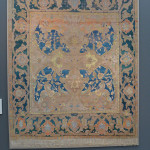
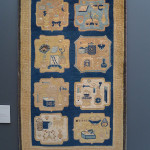



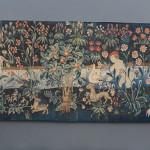
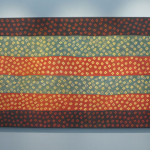
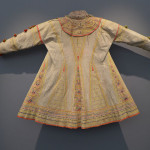

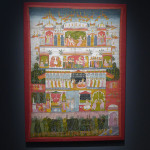
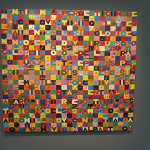
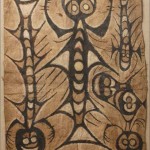





















Comments [0] Sign in to comment